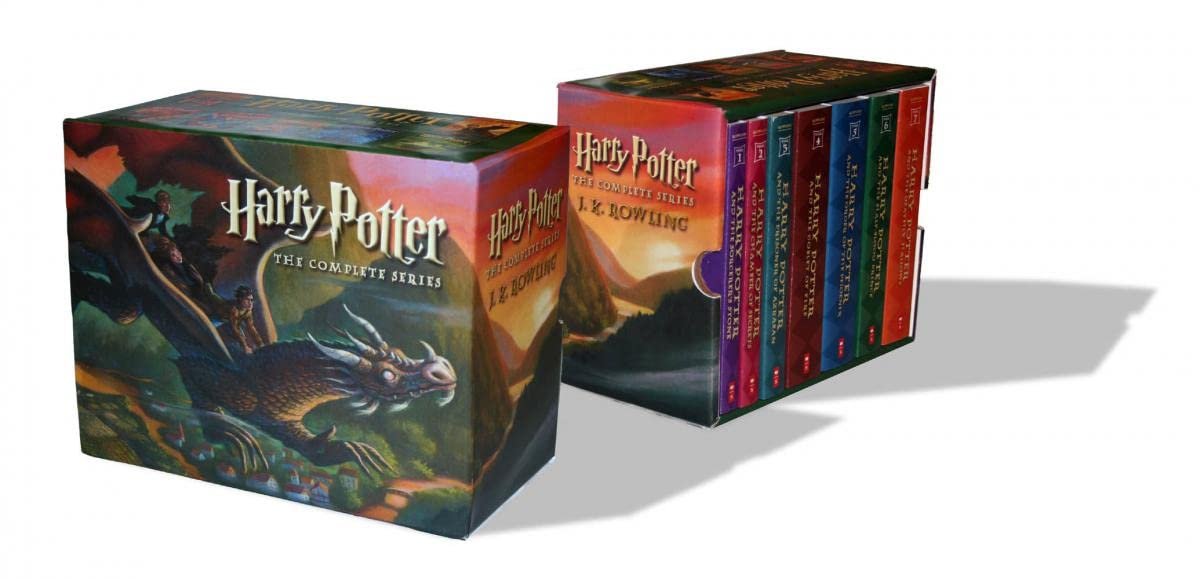Writing a Novel Series for Kids, Part 2
Main Characters in Harry Potter
I don’t think I can write about series fiction for kids without first talking about Harry Potter. (If you’ve never read any Harry Potter, you’re missing out on a huge influence in the kid lit world.)
The Harry Potter series by J. K. Rowling is, at least according to Mental Floss, the best-selling book series of all time. And that list includes fiction series for adults too. (This list includes the number of copies sold, publication dates, and original language.)
After the first Harry Potter novel was published in 1998, my husband and I, plus a few million other fans, eagerly awaited each new book in the seven-book series. What trouble would Harry, Ron, and Hermione find themselves in this year? What new magic would they learn? How would Lord Voldemort reappear? How would things keep getting harder, darker, worse?
Since then I’ve reread the series several times. The characters are one reason I keep returning to Rowling’s fun world.
When I googled how many characters are in the Harry Potter series, the answer was nearly 800! Holy moly! That sounds overwhelming to me.
But, according to Rowling herself, this story idea started with one character—her protagonist. Harry is a relatable kid who can do magic, though he doesn’t know that in the beginning. He’s also an orphan. His parents were murdered by a dark wizard when he was a baby, and ever since he’s lived with an aunt, uncle, and cousin who seem to hate him.
Harry is a lonely boy who obviously needs friends, and Rowling gives him two of them. Ron Weasely has a large, warm family—a great contrast to Harry’s rude, cranky relatives. Ron, who’s the youngest son with many older brothers, also gets to introduce Harry to parts of the Wizarding world—like chocolate frogs, every-flavor jellybeans, and Quidditch.
Over the course of the series, the best friends experience conflict, as best friends often do. One part of that conflict has its roots in Harry’s relative wealth, inherited from his parents, compared to Ron’s family situation. Hand-me-down robes and second-hand school books are the norm for Ron, but what ultimately becomes hard for him to deal with is Harry’s fame as “the boy who lived.”
From Harry’s point of view, Ron has the better deal—a large, loving family and getting to grow up in the Wizarding world.
Harry’s second best friend, Hermione Granger, adds another layer to the three-part friendship. Hermione is an only child born to non-magical parents, so she grew up in the non-magical world like Harry did. She appreciates Ron’s family almost as much as Harry does and becomes good friends with Ron’s little sister.
Hermione often plays the go-between or translator, explaining things she’s learned about the Wizarding world to Harry that it doesn’t occur to Ron to explain. She’s intellectual, book smart, and much more of a rules follower than the boys, which adds to the smaller conflicts in each story arc. She also pays attention to things the boys don’t notice, like the wider political situation of the Wizarding world.
Each of these characters grows and changes in age-appropriate and believable ways throughout the series. They are distinctly different from each other, with unique vulnerabilities and strengths. When the three collaborate, they generally succeed.
These three characters are the heart of the series. Harry is, of course, the main character. It’s his relationship with Voldemort that drives the whole series arc. Ron and Hermione are supporting characters but they are full, rounded characters with their own arcs.
If you’re working on a series, who are your primary characters? Have you created rich histories for them? How will they change and grow during your series? Of if they don’t change much, why not?
